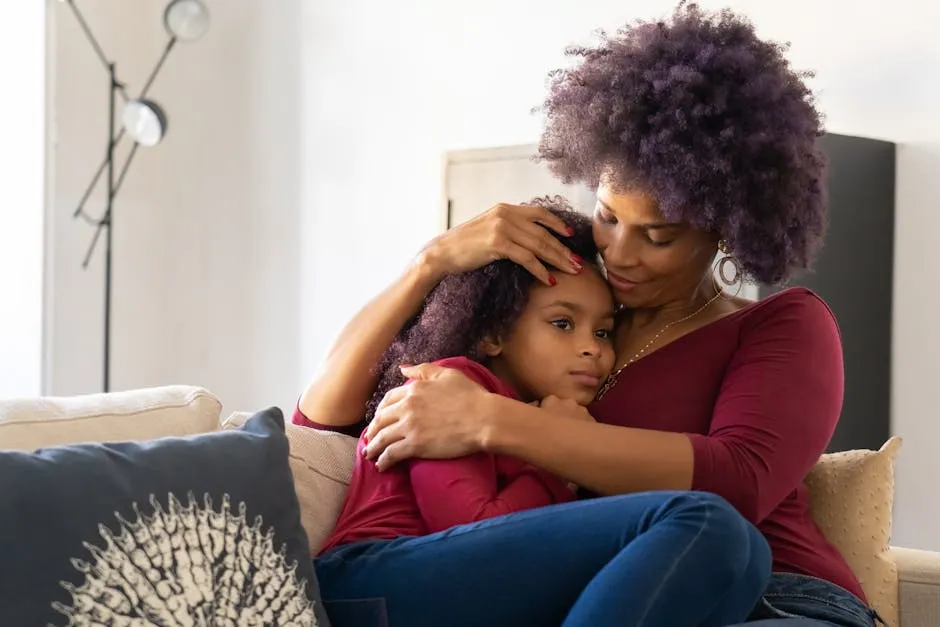
Why Do Most Abuse Victims Like Being Touched in Relationships
Introduction
The connection between abuse victims and physical touch is complex. Many survivors yearn for affection, even after experiencing trauma. Understanding this paradox is crucial for building healthy, supportive relationships.
Summary and Overview
This article focuses on why many abuse survivors crave physical touch in their relationships. It explores the psychological and emotional factors that contribute to this desire. We’ll discuss how trauma influences these feelings and outline the main points, including the psychological impact of abuse, the need for connection, and the duality of touch. By the end, you’ll have a clearer understanding of this phenomenon and how to approach it with empathy.
Understanding the Desire for Touch
The Psychological Impact of Abuse
Abuse has profound effects on an individual’s emotional responses to touch. Trauma can create mixed feelings about physical affection. Many survivors may feel both a deep need for connection and a fear of intimacy. This duality can lead to confusion and a struggle for emotional healing.
Statistics show that a significant number of individuals experience some form of abuse in their lifetime. Studies indicate that approximately one in five women and one in six men face sexual violence. These traumatic experiences can alter how survivors perceive touch and affection, often complicating their emotional responses.
The psychological impact of abuse includes heightened anxiety and fear. Trauma responses can make physical touch feel both comforting and threatening. Survivors often grapple with these conflicting feelings, seeking intimacy while fearing potential harm. Understanding these emotional layers is essential for supporting survivors in their relationships.
Many survivors are on a journey of emotional healing. They often crave the reassurance that physical touch can provide. For them, affectionate contact may symbolize safety and trust. However, it’s crucial to recognize that not all touch is welcomed. Understanding these dynamics helps create environments where survivors feel safe and valued.

The Paradox of Touch in Relationships
Coping Mechanism vs. Trigger
For many abuse survivors, physical touch embodies a complex duality. On one hand, it can be a source of tremendous comfort. It offers a sense of safety and connection. A gentle touch or a hug might remind them they are not alone. Yet, on the other hand, touch can also trigger painful memories. The very sensation that brings solace can suddenly evoke past traumas. This paradox creates a unique challenge in relationships.
Trust plays a crucial role in navigating this landscape. Without trust, even the most innocent touch can feel threatening. Survivors often need reassurance that their partners respect their boundaries. Establishing trust allows them to experience the comfort of touch without fear. Research suggests that effective coping strategies, such as open communication, can help manage these emotional triggers. This balance is vital for nurturing healthy relationships.
Statistics reveal that many survivors report mixed feelings about intimacy. A significant percentage experience anxiety when it comes to physical affection. This highlights the importance of understanding the nuances of touch in relationships. Partners must remain sensitive to these emotional complexities. By fostering an environment of trust, they can help survivors feel more secure.

Vulnerability and Intimacy
Survivors often crave intimacy despite their fears. This desire for connection can lead to a complicated journey. They may yearn for closeness but struggle to embrace it fully. The path from fear to acceptance in physical interactions is rarely straightforward. Many survivors grapple with feelings of inadequacy or shame, worrying their past defines them.
Statistics indicate intimacy issues are common among abuse survivors. A substantial number report challenges in establishing close relationships. Yet, many also express a deep longing for connection. This desire can be a powerful motivator for healing. It encourages survivors to confront their fears and seek out supportive partners.
Ultimately, understanding the interplay between vulnerability and intimacy is essential. It allows both partners to navigate their relationship with empathy. When both individuals are committed to fostering trust, they can create a nurturing space. This environment encourages healing and allows intimacy to flourish, helping survivors reclaim their sense of safety and connection.

Healing Through Touch
Therapeutic Touch
Touch can be incredibly healing, especially in a therapeutic setting. Spaces like massage therapy or counseling offer safe environments to experience touch without fear. These settings create a comforting atmosphere where survivors can explore their feelings. In therapy, touch can signal safety and connection, helping survivors rebuild their sense of self.
Research highlights the benefits of touch in trauma recovery. Studies show that physical touch can reduce anxiety and foster emotional healing. For example, a gentle touch during therapy can trigger the release of oxytocin, a hormone that promotes feelings of trust and bonding. This response can be particularly beneficial for those working through trauma, providing a sense of reassurance.
Additionally, therapeutic touch can help survivors regain control over their bodies. Many survivors feel disconnected from their physical selves due to past trauma. Engaging in touch therapy can help them reconnect, fostering a sense of empowerment and ownership. When survivors experience safe and nurturing touch, they often report feeling more grounded and present in their bodies.

To further enhance the healing experience, consider using Aromatherapy Bath Salts. They can create a soothing ritual that complements the therapeutic touch, allowing for deeper relaxation and emotional release.
Building Healthy Boundaries
Establishing healthy boundaries is crucial in any relationship, especially for survivors of abuse. Boundaries in relationships help define personal space and comfort levels. This is essential for nurturing trust and respect. Survivors should feel empowered to communicate their needs regarding touch.
Open conversations about boundaries can enhance healthy communication. Partners need to understand each other’s comfort levels and preferences. This dialogue fosters a sense of safety, allowing both individuals to express their needs without fear of judgment. Personal space is not just a physical concept; it’s also emotional. Respecting space can strengthen intimacy over time.
Moreover, practicing healthy boundaries can lead to deeper connections. When both partners are aware of each other’s limits, they can explore affection in a way that feels comfortable. This approach helps reduce anxiety linked to touch and enhances emotional well-being. Both partners must be patient and supportive, encouraging a nurturing environment where boundaries are respected and valued.

Supportive Relationships
Supporting abuse survivors in their relationships with touch is vital. Partners can create safe spaces where affection is welcomed but not forced. Open communication is key. Ask your partner how they feel about touch. Are there specific types of touch they prefer? Maybe a gentle hug or holding hands feels comforting. By discussing preferences, you can build trust and intimacy.
Healthy communication about physical affection involves active listening. When your partner shares their feelings, respond with empathy. Validate their experiences and reassure them of your support. For instance, say, “I understand that touch can be complicated for you, and I’m here to help you feel safe.” This approach fosters a deeper connection.
Research highlights the importance of understanding relationship dynamics involving trauma survivors. A study published in the Journal of Interpersonal Violence found that survivors often benefit from partners who respect their boundaries. By prioritizing these boundaries, partners can help survivors navigate their feelings about touch. In turn, this creates a nurturing environment that promotes healing and emotional growth.

FAQs
Why do some abuse survivors fear touch?
Abuse survivors often fear touch due to past trauma. They might associate touch with harm or betrayal. This fear can manifest as anxiety or panic when physical contact occurs. Triggers may include certain scents, locations, or even specific people. Understanding these fears is essential for creating a supportive environment.
Can touch help in healing from trauma?
Yes, touch can offer therapeutic benefits. Gentle, consensual contact can foster feelings of safety and connection. Research indicates that physical touch releases oxytocin, which helps reduce anxiety. This can be particularly healing for trauma survivors. However, it’s crucial to ensure that the touch is welcome and comfortable.
How can partners support abuse survivors in their need for touch?
Partners can support survivors by being patient and attentive. Here are some practical tips: – **Communicate openly:** Discuss what types of touch feel comfortable or comforting. – **Respect boundaries:** Always ask for consent before initiating touch. – **Be patient:** Understand that trust takes time to build. – **Check-in regularly:** Ask how your partner feels about physical affection. – **Provide reassurance:** Let them know that their feelings are valid, and they can express their needs. These strategies can help create a safe space for survivors to express their needs for touch.
What are the signs that touch is triggering for an abuse survivor?
Recognizing when touch is triggering for an abuse survivor is essential for fostering a safe environment. Watch for the following signs: – **Flinching or withdrawing**: If a survivor pulls away or flinches at touch, this indicates discomfort. – **Tense body language**: Look for signs of tension, like stiffened muscles or clenched fists. – **Facial expressions**: A change in expression, like frowning or grimacing, can signal distress. – **Avoidance**: If they avoid physical contact altogether, it may stem from past trauma. – **Verbal cues**: Listen for hesitations or requests to stop. Their words can provide insight into their comfort level. Understanding these signs helps create supportive relationships. Be patient and compassionate as survivors navigate their feelings about touch.
Are there specific types of touch that are more comforting for survivors?
Certain types of touch can be more comforting for survivors of abuse. Here are a few that may foster safety and reassurance: – **Gentle touches**: Light, non-intrusive contacts, like a soft hand on the shoulder, often feel safe. – **Hugs**: A warm, consensual hug can provide comfort, but always ask before initiating. – **Holding hands**: This simple gesture can create a sense of connection without overwhelming the survivor. – **Massage**: Therapeutic touch, like massage therapy, can promote healing in a controlled environment. – **Cuddling**: For those who feel safe, cuddling can be a way to establish intimacy and trust. Each survivor is unique, so it’s important to communicate openly about their preferences. This ensures their comfort while strengthening connections.
Conclusion
Understanding the nuanced relationship between abuse survivors and touch is vital. Many survivors may crave physical affection, yet feel conflicted due to past traumas. Recognizing triggers and preferred types of touch allows for healthier interactions. Approach this topic with empathy and sensitivity to foster supportive relationships. Remember, every survivor’s experience is unique, and their comfort should always be prioritized.

To encourage mindfulness and self-reflection, consider using a Self-Care Journal for Mental Health. Journaling can be a powerful tool for survivors to express their thoughts and emotions, offering a safe space for healing.
Calls to Action
What are your thoughts on this topic? Share your experiences in the comments below! If you or someone you know struggles with these issues, consider reaching out to a professional for support. For further reading, explore resources on trauma and healing to deepen your understanding.
Please let us know what you think about our content by leaving a comment down below!
Thank you for reading till here 🙂
All images from Pexels




